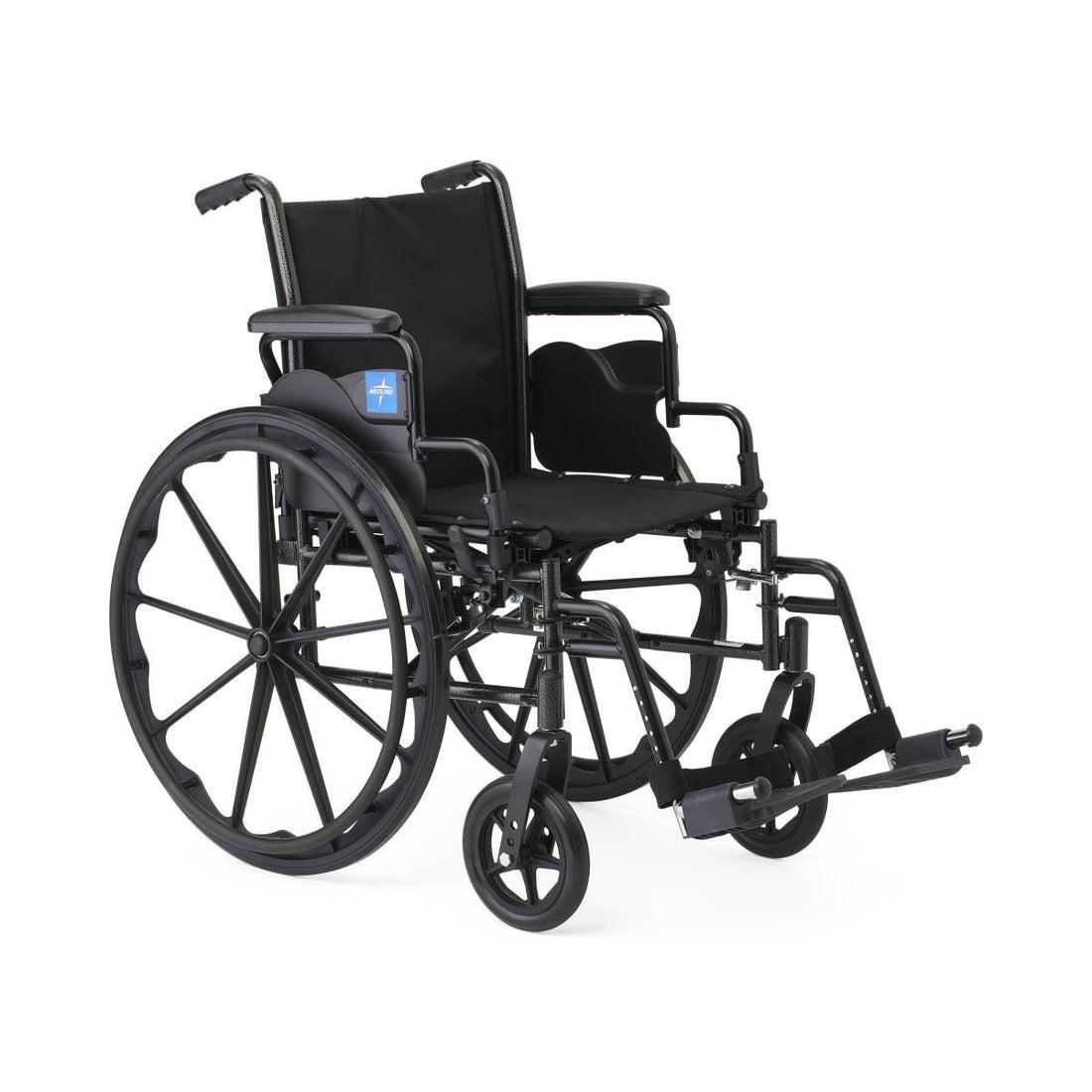Health
Deep Squat: Everything You Should Know before Performing

Deep squats help stimulate multiple muscle groups leading to core stability and several health benefits. Deep squats are excellent for strength training and improving your athletic performance.
If you want to see some reliable results, include the deep squats as a staple exercise in your workouts.
Squats are known to increase knee stability and are a great way to tone your legs, back, and shoulders. Since it is a greater body workout, all your body’s muscles get worked out and pumped up, so you get to reap more significant benefits out of just one exercise!
What is the Concept of Deep Squat?
Deep squat makes a knee angle of greater than 120 degrees, the main areas squats aim are the legs. The concept behind deep squats is to attain stability and maintain a good body balance.
It is said that the king of all exercises are squats! In this type of exercise, the body is supported on the feet and the knees are bent so that the buttocks rest on or near the heels.
There are many variations of squats, including deep barbell squats, which increase lower-back stability and deep squat stretches, which are great for strengthening the thigh. However, deep squats have leverage over them as it increases overall body strength and flexibility.
10 Benefits of Doing Deep Squat Exercise
1. Core muscle building and lean body mass
Deep squat exercises help in the muscle building as they promote healthy hypertrophy in the thigh region. This exercise also dramatically helps in core muscle building, especially of the lower abdominal muscles. Moreover, deep squats are beneficial if your goal is to achieve lean body mass and core stability.
2. Deep squats improve flexibility
If you ask any athletes or gymnasts about their go-to exercises, one of their regulars is deep squats. When doing this workout, your body switches between stretch and static motions are improving flexibility.
Our routines are such that we sit all day, most of us are too lazy to work out, let alone the strenuous squats! But, here is the good news! You don’t need to go to the gym to stretch out! Deep squats help stretch out our calf muscles and Achilles the most. This causes your muscles to activate stretch out improving flexibility.
3. Increases the level of good hormones
Your body produces many hormones in the bloodstream. Some of these hormones also include testosterone and human growth hormone. Stretching and deep squats help in muscle recovery! This exercise activates hormones that trigger an increase in muscle mass in areas other than the legs.
4. Better posture
Deep squats improve joint mobility and help strengthen your back muscles. It will help your body and spine align to their natural positions. You will attain a better posture with time and feel like your body has shed a load.
5. Stronger joints
When your muscles strengthen, it automatically supports your joints and protects them. Squatting improves the range of motion of the joints. Almost all joints have fluids in them to keep the joints from rubbing together. As you perform squats, more nutrients are brought towards the joints through the synovial fluid, thus making the joints healthier and stronger.
6. Helps to build nice and strong legs
Since deep squatting helps strengthen the gluteus and hips, it gives your legs more strength. Including deep squats in regular workouts increase the stability and the shock-absorbing ability around the knee area. On the other hand, deep squats are the key to shredded thighs and calves. Who doesn’t want a nice but and those worked out legs looking oh-so-good!
FMS deep squats demonstrate flexibility and core stability pattern of the hip and shoulders functioning in symmetrical positions.
7. Healthier knees
Initially, people were of the opinion that deep squats could be harmful to the knees. However, according to research, the preceding statement proved to be wrong. In fact, deep squats actually strengthen the ligaments, help reduce knee inflammation, and promote healthier knee bones. When your thigh and hip muscles are strong, they prevent any impacts on the knee and divide the body’s load evenly.
8. Back Pain Relief
Since deep squats target core muscles, it also helps alleviate the back pain. When you are going to a squatting position, it helps stabilize the pelvis and spine muscles. When these muscles are strong, they support the back and prevent it from getting overworked.
9. Improved Digestive Health
Regular deep squats help promote the regularity of your bowel movement, which in turnprevents constipation. Since your digestive system improves, your body tends to absorb more calcium for the bones preventing arthritis, irregular blood pressure and poor circulation. A good digestive system also boosts the athletic abilities of a person; thus, you feel less lazy and more active.
10. Increases Bone Density
When you put pressure onto your bones, the bones start growing. This results in bone formation, which is done when cells called osteoclasts in the bone multiply. Deep squats help increase bone mineral density hence helping you achieve healthier bones. Always use lighter weights when going for a lower squat rather than the heavier weights, which are appropriate for partial squats.
Is It Safe to Squat Deep?
Yes, it is safe to deep squat as long as you do not do it with heavy loads and have healthy knees.
Doing deep squats increases the knees’ stability, corrects posture, and helps strengthen the lower body. However, keep in mind that not doing deep squats correctly can cause excessive compression forces on joints, which can result in sprains and strains. This can also lead to knee pain and might damage the knees as well. The best way to know if you are doing deep squats correctly is to follow professional deep squats videos and consult a physical therapist.
How to Perform Deep Squat in a Right Way?
Firstly stand with your feet wide apart with dumbbells in your hands above your head. Now smoothly squat down till the thigh is parallel to the calves. Hold the position for 5 seconds. Don’t curl your shoulders and maintain a slightly extended spine. Now squat up back to the initial position standing straight with your feet apart. Follow the steps accurately and efficiently for the best results! If you are still unsure of how to do it, take a look at this video!
How Do You Do Deep Squats at Home?
You can start by watching videos, exercise tutorials, or using apps that may help you and assist you in the deep squats exercise to be performed properly at home. You will need dumbbells for this exercise. You can call an instructor home or take online classes for proper guidance. Don’t forget to stay consistent until the results start showing. You will have to be patient. Follow this video to make sure you are not skipping any step.
Conclusion
Although regular squats help keep you in shape, but deep squats are a workout for the entire body. They help build overall body strength and improve your body’s flexibility score. It is the way to a healthy digestive system and prevents many diseases also.
You don’t need to be a pro to start, just some warm-up and some tips will get you going!
Deep squats are one of those exercises to which you will stick to for life once you start at it!
Health
Wheelchairs: Types, Functions, Advantages, and Recommendations for Choosing


Wheelchairs are an essential means of transportation for people with disabilities, helping them maintain mobility, independence, and improve their quality of life. They provide comfort and convenience in everyday life, allowing users to be active and independent.
Let’s explore the different types, functions, and advantages of wheelchairs, and provide recommendations on how to choose the right one.
Types of Wheelchairs
There are several types of wheelchairs, each with its own characteristics and purpose:
1. Mechanical.
Mechanical or manual wheelchairs are propelled by the user or an assistant. They are simple in design, lightweight and affordable.
Advantages:
- Light weight.
- Easy to use and maintain.
- Relatively low cost.
- Do not require power supply.
Disadvantages:
- Require physical effort to move.
- Limited speed and range of movement.
- Not suitable for people with limited hand strength.
2. Electric.
Equipped with a motor and controlled by a joystick or remote control. They are suitable for people with disabilities who cannot move the wheelchair on their own.
Advantages:
- Easy to operate.
- Ability to travel long distances.
- High level of comfort and support.
- Suitable for users with reduced mobility.
Disadvantages:
- High cost.
- The need for regular battery charging.
- Large weight and dimensions.
3. Sports.
Sports wheelchairs are designed for active users who play sports or lead an active lifestyle. They have a lightweight and durable design, with special wheels and accessories to improve maneuverability and speed.
Advantages:
- Lightness and maneuverability.
- Strength and durability.
- Suitable for an active lifestyle.
Disadvantages:
- High cost.
- Not always suitable for everyday use.
4. Children’s.
Children’s wheelchairs are specially designed for young users with disabilities. They take into account children’s physiological characteristics and provide a high level of comfort and safety.
Advantages:
- Adaptation to the needs of children.
- Adjustable components for child growth.
- High level of comfort and safety.
Disadvantages:
- Limited period of use due to the child’s growth.
- High cost of specialized models.
5. Wheelchairs for an active lifestyle.
Designed for users who lead an active lifestyle despite physical limitations, including work, travel, and sports. They combine lightness, maneuverability, and comfort.
Advantages:
- High maneuverability and lightness.
- Suitable for an active lifestyle.
- Convenient for traveling.
Disadvantages:
- May be less comfortable for prolonged use.
- High cost.
You can find a wide range of wheelchairs from world-famous brands: https://medsupplycart.com/
Functions of Wheelchairs
They perform several important functions that help users maintain independence and improve their quality of life:
- Mobility. Their main function is to ensure the mobility of the user, allowing them to move around at home, at work, and on the street.
- Support. They provide the necessary support for people with disabilities, helping them maintain proper posture and avoid injury.
- Comfort. They provide comfort through ergonomic design, adjustable seats and backrests, and additional accessories such as armrests and footrests.
- Independence. Wheelchairs help users maintain their independence, allowing them to perform daily tasks and engage in social activities independently.
Advantages of Wheelchairs
Wheelchairs have several advantages that make them indispensable for people with disabilities:
- Improved quality of life. They help users lead an active lifestyle, participate in social activities, and maintain independence.
- Reducing physical activity. They reduce the physical load on a person with disabilities, allowing them to move around effortlessly.
- Improved safety. Ensure user safety by helping to avoid falls and injuries.
- Comfort and support. Provide comfort and support, helping to maintain proper posture and avoid pain and discomfort.
Recommendations for Choosing a Wheelchair.
- Identification of needs. Before choosing a wheelchair, it is important to identify your needs and requirements. Consider your lifestyle, activity level, physical abilities, and medical needs.
- Consultation with a specialist. Consult your doctor or rehabilitation specialist. They can help you determine which type of wheelchair is best for your needs.
- Read reviews and ratings. Read reviews and ratings of different models. This will help you find a reliable and comfortable wheelchair that meets your needs.
- Test the wheelchair. Be sure to try it out before you buy. Make sure it is comfortable, easy to operate, and meets your needs.
- Warranty and service. Check the warranty terms and availability of service centers in your area. This will ensure timely repairs and maintenance.
Wheelchairs are an important means of transportation for people with disabilities. They help maintain mobility, independence, and improve quality of life. Choosing the right wheelchair depends on the needs and requirements of the user, as well as the conditions in which it will be used. Consultation with a specialist, reading reviews and testing will help you make the right choice and ensure maximum comfort and support.
Beauty
How to Test for Acne


Acne is the most common skin issue in the United States, affecting an estimated 50 million people. Although most prevalent in teenagers and adolescents, adult acne is a problem affecting men and women throughout their adult lives.
So, how do you know if you suffer from acne, and how do you find out what is causing it? Let’s take a closer look.
What is acne?
Acne is a skin condition that predominantly leads to spots and oily skin. It most typically occurs on the face, back, and chest. Acne is often linked to a change in hormone levels during puberty but can start at any age.
Some people only experience mild symptoms of acne that do not require treatment, whereas others struggle with more severe issues.
What are the main symptoms of acne?
Although everyone’s skin is different, some of the most common symptoms of acne are:
- Crusting of skin bumps
- Cysts
- Papules (small, red bumps)
- Pustules (small, red bumps that contain white or yellow pus)
- Redness around skin eruptions
- Scarring of the skin
- Whiteheads
- Blackheads
The symptoms of acne most commonly occur on the face, although they can also manifest themselves on the shoulders, back, arms, chest, and buttocks.
How is acne diagnosed?
If you suspect that you may have acne, you can make an appointment with your doctor, who will be able to give you an official diagnosis. In most cases, they can do this simply by examining the skin without the need for any testing.
Alternatively, you could book an appointment with a dermatologist, although this is unlikely to be covered by your health insurance.
What tests are available for acne?
If you struggle with chronic acne and would like to find out more about what is causing your skin to break out, you might want to consider requesting a blood test for acne.
Although this can be carried out by your doctor, it would be better to work with dermatologists and skin experts who can administer an in-depth test to see what is going on underneath the surface of your skin.
There are lots of different biomarkers that can be checked to see what is causing the acne on your skin, such as:
- Blood glucose
- Kidney function
- Electrolytes
- Inflammation
- Vitamins and minerals
- Liver function
- Thyroid
- Hormones including testosterone, estrogen and progesterone
- Gallbladder function
It is highly unlikely that your doctor will check all these elements of your health when doing a blood test as it is expensive to do. However, this can leave you with even more unanswered questions. However, when you undergo full testing, you can find the root cause of your acne and make any necessary changes to your lifestyle, diet, and skincare routine.
You can order acne health skin care home test kits that are delivered directly to your doorstep, which require you to take a sample and post it back to the lab. Alternatively, if you do not feel comfortable doing this, you can make an appointment with a private clinic.
What triggers acne outbreaks?
There are lots of things that can trigger an acne breakout, including:
- Hormonal changes such as puberty, menstrual periods, pregnancy, birth control pills, and menopause.
- Certain medications, such as steroids and testosterone.
- Birth control devices such as drug-containing IUDs.
- Excessive touching of the skin.
Although many people believe that a poor diet can contribute to spots, there is little evidence to suggest that eating sugary foods such as chocolate and candy causes spots.
What are the best treatments for acne?
Depending on the severity of your symptoms, there are several treatment options available. For mild cases, it can be a good idea to start with a good skincare regime that includes cleansing, moisturizing and gentle exfoliation.
For more stubborn spots and blemishes, over-the-counter treatments that contain salicylic acid or benzoyl peroxide can be effective. However, these can cause redness, drying, or excessive peeling of the skin in some people.
Lastly, for those who have severe symptoms of acne, there are several treatments that your doctor may be willing to prescribe, such as oral and topical antibiotics and prescription formula sulfur, resorcinol or salicylic acid.
Final thoughts
Acne, both in adolescence and adulthood, can have a seriously detrimental effect on your self-esteem. Fortunately, you do not need to suffer in silence as there are tests and treatments available, with options for all ages and skin types.
Health
When to Know Your Sore Throat Needs Urgent Attention


Sore throats are incredibly common, especially in children, and, in most cases, are nothing to be concerned about. However, sometimes they are a sign of something more serious.
If you have a persistent sore throat or your child keeps complaining of having a sore throat and you are starting to worry, it can be a good idea to know when a sore throat requires urgent attention.
What are the most common causes of a sore throat?
Most colds are caused by a virus, such as the common cold or seasonal flu. However, there are other potential causes, including:
- Allergies
- Bacteria
- Dry air
- Exposure to pollutants, excessive dust or chemicals
- Smoking or exposure to second-hand smoke
Could my sore throat be a sign of throat cancer?
In rare cases, a sore throat can be a sign of cancer in the throat, which affects around 1% of the adult population. There are several different types of throat cancer, including nasopharyngeal cancer, glottic cancer, and oropharyngeal cancer.
As mentioned above, it is very unlikely that your sore throat is a symptom of having throat cancer, although it is important to know that it could be. Some of the most common signs and symptoms of throat cancer include:
- A cough
- Changes in your voice, such as hoarseness or an inability to speak properly
- Difficulty swallowing
- Ear pain
- A lump or sore that does not heal
- Weight loss
It is also worth knowing the factors that increase your risk of throat cancer, such as being a smoker or chewing tobacco, excessive alcohol consumption, viral infections such as HPV, and exposure to toxic substances.
Do I have strep throat?
Strep throat is a bacterial infection that makes your throat feel sore and scratchy. This infection only accounts for a small percentage of sore throats, however, if left untreated, it can cause issues including inflammation of the kidneys and rheumatic fever.
Strep throat is most common in children, although it can occur in adults as well. If you suspect that you or your child has strep throat, make an appointment with your doctor as soon as possible.
Some of the most common signs of strep throat include:
- A sore throat
- Chills
- A headache
- Loss of appetite
- Abdominal pain
- Nausea and/or vomiting
It is worth knowing that strep throat does not normally cause a cough, so if you have this symptom, you are more likely to have a viral infection.
Is a sore throat a symptom of COVID?
While a sore throat can be a symptom of COVID, it is not as common as a fever and a dry cough. However, if your sore throat is a result of COVID-19, it might feel:
- Dry
- Painful when you swallow
- Scratchy or itchy
If your sore throat is accompanied by a fever, headache, and a dry cough, you may want to take a test to rule out COVID.
What symptoms indicate that a sore throat requires medical attention?
A viral sore throat should start to show signs of improvement within five days. If you or your child has had a sore throat for longer than this time and are not responding to over-the-counter treatments, it can be a good idea to book an appointment with your doctor.
However, if your sore throat has persisted for a long time, seems too severe or you have other worrying symptoms, it may require urgent medical attention. Concerning symptoms that require immediate investigation include:
- Blood in your saliva or phlegm
- Dehydration
- Difficulty breathing or swallowing
- Excessive drooling, especially in young children
- Joint pain or swelling of the joints
- A high fever (over 101 Fahrenheit)
- Chills and body aches
- A rash or hives on your body
- Earache
- Hoarseness that lasts more than two weeks
- Unexplained weight loss
Final thoughts
When it comes to any persistent or worsening symptoms, including a sore throat, it is always better to be safe than sorry and seek medical advice. If your sore throat is accompanied by any other worrying symptoms as detailed above, you should seek medical attention as quickly as possible.
In most cases, your sore throat will go away on its own with time and rest or you may require antibiotics if you have a bacterial infection.
-



 Captions3 years ago
Captions3 years ago341 Sexy Captions to Fire Up Your Instagram Pictures
-



 Captions3 years ago
Captions3 years ago311 Night Out Captions for Instagram and Your Crazy Night
-



 Captions3 years ago
Captions3 years ago245 Saree Captions for Instagram to Boost Your Selfies in Saree
-



 Captions3 years ago
Captions3 years ago256 Best Ethnic Wear Captions for Instagram on Traditional Dress
-



 Captions3 years ago
Captions3 years ago230 Blurred Picture Captions for Instagram
-



 Captions3 years ago
Captions3 years ago275 Deep Captions for Instagram to Express Your Thoughts
-



 Quotes3 years ago
Quotes3 years ago222 Nail Captions for Instagram to Showcase Your Fresh Manicure
-



 Captions3 years ago
Captions3 years ago211 Laughing Captions for Instagram | Laughter Is the Best Medicine












